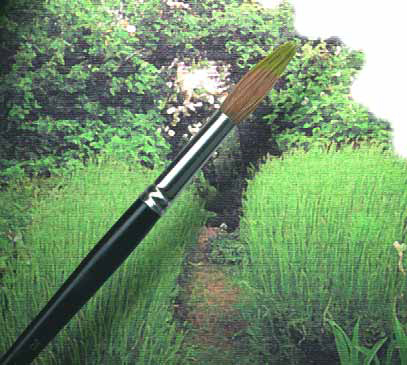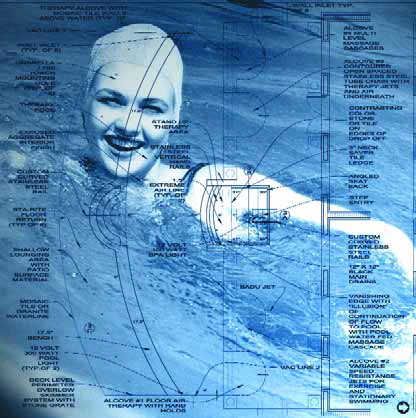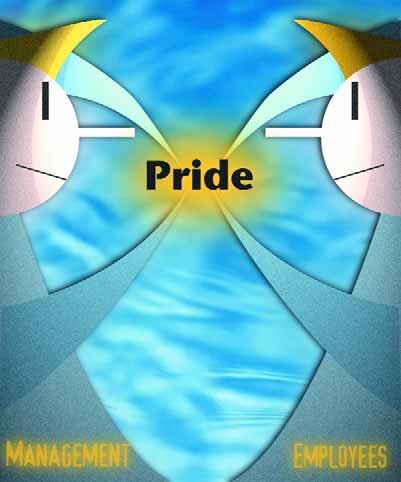Professional Watershaping
I've never been big on trade shows and conferences. For years I have resisted them in the belief that they were mostly for those who had time to attend them and craved the camaraderie and social opportunities they offered. I've always looked at the programs and have seen that there's usually been something to learn during these events, but I brushed off the possibility of attending because I always thought I could get most of what I needed by working and paying attention to books and magazines. Also, there was always the issue that, as the sole provider in a one-person operation, spending so many days away from my clients and prospects would prove
Wonderful projects often proceed at their own paces. More often than not, high-end clients on either the commercial or residential side will require us to spend a great deal of time and effort in developing, adjusting and revisiting designs so they wind up with exactly the watershapes and spaces that best suit their needs and desires. Sometimes that process is tremendously involved, as has been the case with a project I discussed in a previous "Aqua Culture" installment (May 2004, page 10). The clients are creating what they're calling a "world-class pampering spa" as a major expansion of an existing facility in Jacksonville, Fla. Our work on the project includes a broad range of
If you ask a roomful of watershapers about the toughest of the basic business challenges they face, there's little doubt in my mind that a large percentage of them would say that finding, hiring and keeping good employees is near the top of the list. That always-tough task is complicated by the fact that the vast majority of watershapers need to rely on others to get a project done. Yes, there are a few of you out there who work entirely on your own with the aid of subcontractors, but watershaping is generally a group effort involving combinations of in-house salespeople, office managers and field workers as well as designers, engineers, project managers and all sorts of
Watershaping has come a long way in the past half dozen years – a journey…
"To succeed in business or in life, I don't think you need fancy schooling or highly technical experience. What I think you need is common sense, a commitment to hard work and the courage to go your own way."-- Robert Mondavi That statement from Robert Mondavi's autobiography truly inspires me. Since I first read those words, I've become keenly aware of how this and other things he says about his career in the wine industry apply not only to
Recently, I've been involved in the early stages of a project that has lent new meaning to the phrase, "seeing is believing." It came up as a result of a call from an agent for a well-heeled client who was interested in having me design and build a residential swimming pool in the Dallas/Fort Worth area. When I arrived in Texas, I was met by the owner's agent, David, and by Marcus Bowen, a landscape architect who was part of the large project team, which, I would learn, included architects, a landscape architect, an interior designer, a lighting designer, various engineers, numerous
I operate under the hopeful assumption that all professional watershapers know that detailed, quality construction plans are crucial to the success of any project. Too often, however, I get the unsettling feeling that some contractors in the watershaping trades see plan documents mainly as a means of securing a construction permit. Such a bare-minimum approach can lead to an endless array of problems that can be summed up simply: Plans lacking in detail leave way too many issues to chance and inevitably lead to mistakes. And because we all work in a field where things are quite literally
What do you really want to know about the arts and crafts of landscaping and watershaping? That's an important question for each and every one of us in the trades to ask of ourselves, because without knowing what you want to know (or at least what you think you should know), all of the talk about the value and power of education is just so much rhetoric. I bring this up because, for a long time now, leaders and regular folks from all walks of the watershaping trades have been beating the educational drum. You read about it in every trade magazine, hear it in the vast majority of seminars and see it in the promotional messages of those who stage trade shows and conferences. Indeed, the
On several occasions during the past few years, I've had the privilege of working with talented professionals who have made it possible for me to operate comfortably far from my home base on what have often been extremely ambitious projects. In fact, I've found some of my most exciting and rewarding recent jobs have been the result of these collaborations with other watershapers. Although working with them is different from
No doubt about it: More and more quality projects are being designed and built by the various segments of the watershaping trades these days. That pleases me for a number of reasons, not the least of which is that it tends to reinforce my observation and belief that great work is done mostly by people who take genuine pride in what they do. Indeed, I see such a consistent correlation between pride and quality that I've come to see the former characteristic as a prerequisite for performance at the highest level. That may seem an obvious point, but when you scratch the surface of the subject as it relates to the watershaping industry, it takes on






















